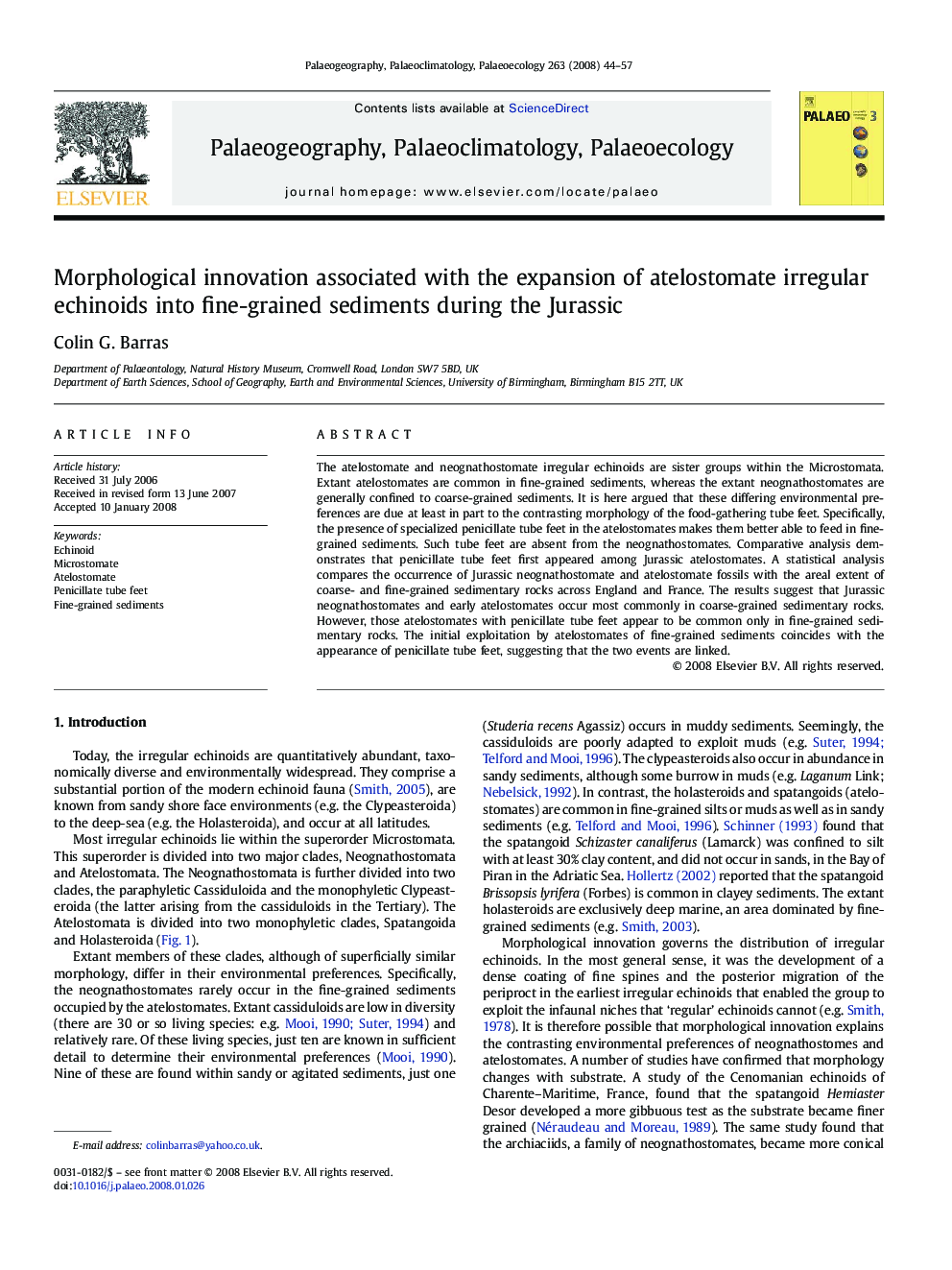| Article ID | Journal | Published Year | Pages | File Type |
|---|---|---|---|---|
| 4468496 | Palaeogeography, Palaeoclimatology, Palaeoecology | 2008 | 14 Pages |
The atelostomate and neognathostomate irregular echinoids are sister groups within the Microstomata. Extant atelostomates are common in fine-grained sediments, whereas the extant neognathostomates are generally confined to coarse-grained sediments. It is here argued that these differing environmental preferences are due at least in part to the contrasting morphology of the food-gathering tube feet. Specifically, the presence of specialized penicillate tube feet in the atelostomates makes them better able to feed in fine-grained sediments. Such tube feet are absent from the neognathostomates. Comparative analysis demonstrates that penicillate tube feet first appeared among Jurassic atelostomates. A statistical analysis compares the occurrence of Jurassic neognathostomate and atelostomate fossils with the areal extent of coarse- and fine-grained sedimentary rocks across England and France. The results suggest that Jurassic neognathostomates and early atelostomates occur most commonly in coarse-grained sedimentary rocks. However, those atelostomates with penicillate tube feet appear to be common only in fine-grained sedimentary rocks. The initial exploitation by atelostomates of fine-grained sediments coincides with the appearance of penicillate tube feet, suggesting that the two events are linked.
